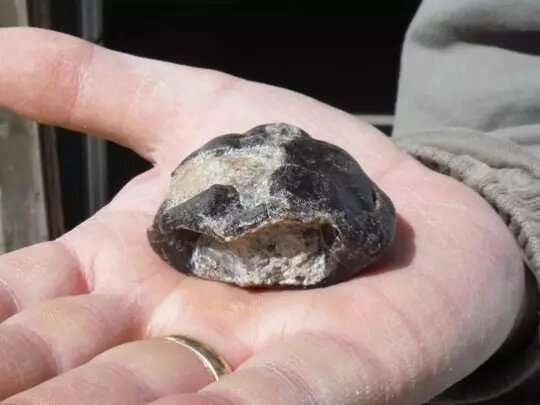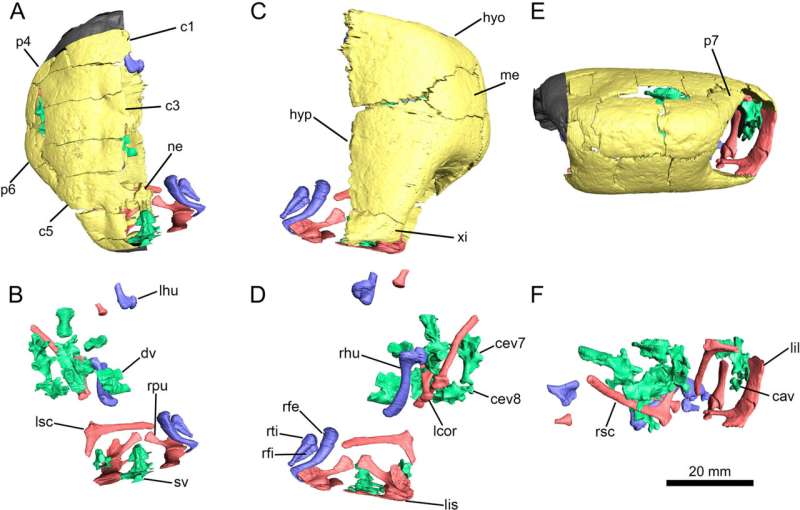This article has been reviewed according to Science X's editorial process and policies. Editors have highlighted the following attributes while ensuring the content's credibility:
fact-checked
peer-reviewed publication
trusted source
proofread
First side-necked turtle fossil ever discovered in UK found on Isle of Wight

The first side-necked turtle ever to be found in the U.K. has been discovered by an amateur fossil collector and paleontologists at the University of Portsmouth.
The fossil remains are the earliest of a so-called side-necked pan-pleurodiran turtle, named as such because they fold their neck into their shell sideways when threatened. This does mean they can only see out with one eye.
Originally found on a beach on the Isle of Wight, the turtle fossil is an almost complete shell with cervical, dorsal and caudal vertebrae, scapulae, pelvic girdle and appendicular bones. Sadly, the skull was missing.
Lead author Megan Jacobs, said, "This is an amazing discovery because it's the first time this type of turtle has been found in the U.K. Even more exciting is that we used a new technique of radiometric dating to determine the age of the fossil beyond any doubt. And to top it off, CT scanning revealed all the tiny bones inside. It's really incredible for what looks like a rolled beach pebble." The paper is published in the journal Cretaceous Research.

Megan and colleagues dissected minerals from inside the turtle shell and analyzed them for uranium and lead. By measuring the ratio of lead to radioactive uranium, they established the turtle was from the Lower Cretaceous period, around 127 million years ago.
The fossil was originally found on the foreshore at Brook Bay on the southwest coast of the Isle of Wight by fossil collector Steve Burbridge. This part of the coast is well-known for fossil vertebrates that come from the cliff and foreshore exposures of the upper part of the famous Isle of Wight fossil beds of the Wessex Formation.
This is the first time that radiometric dating has been used on a fossil from the Wessex formation.
Megan added, "We've nicknamed the turtle 'Burby' after Steve who very kindly donated the specimen to the Dinosaur Isle Museum at Sandown on the Isle of Wight."
The researchers also used cutting-edge micro CT scanning at the University of Portsmouth's Future Technology Center to discern various tiny bones. This advanced imaging technique provided invaluable insight into the structure and composition of the turtle's shell, without damaging it.
Geologist, Dr. Catherine Mottram, from the University of Portsmouth's School of the Environment, Geography and Geosciences is one of the paper's co-authors. She said, "It is exciting that we have been able to use cutting edge radiometric dating techniques to provide absolute constraints for this important sequence for the first time."
Steve said, "It's beyond my wildest dreams to have one of my finds published. I could never have guessed it was such an incredibly important fossil. It's so wonderful to see all the tiny bones inside too."
More information: Megan L. Jacobs et al, A well preserved pan-pleurodiran (Dortokidae) turtle from the English Lower Cretaceous and the first radiometric date for the Wessex Formation (Hauterivian–Barremian) of the Isle of Wight, United Kingdom, Cretaceous Research (2023). DOI: 10.1016/j.cretres.2023.105590
Journal information: Cretaceous Research
Provided by University of Portsmouth





















